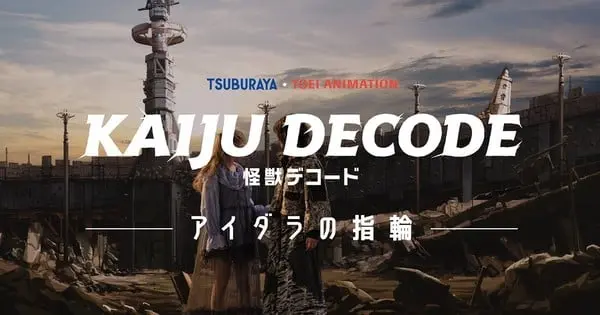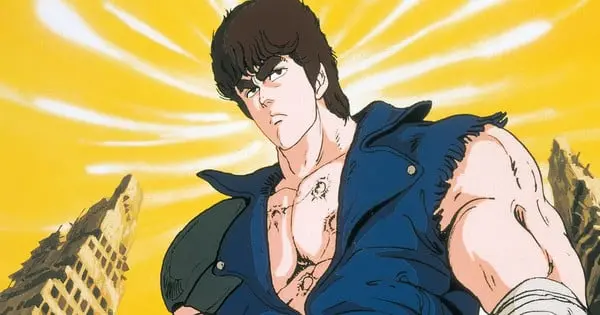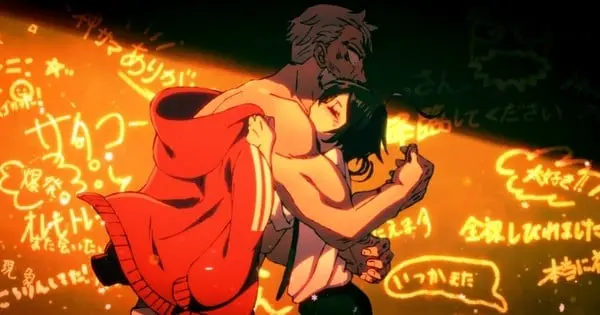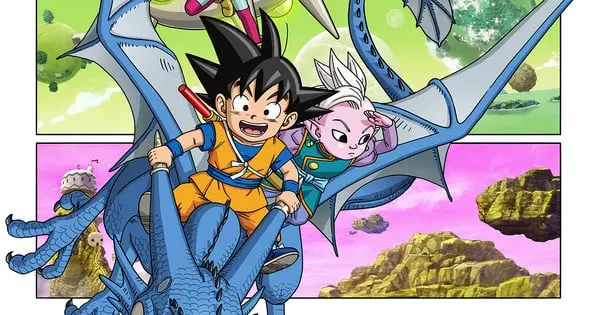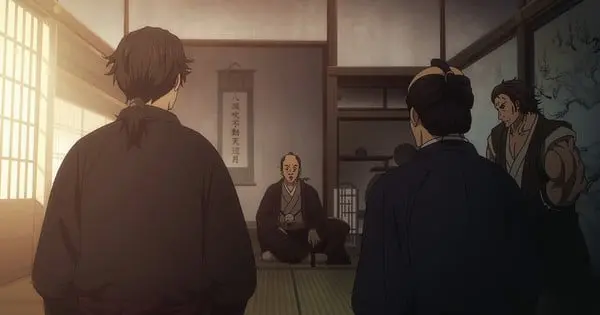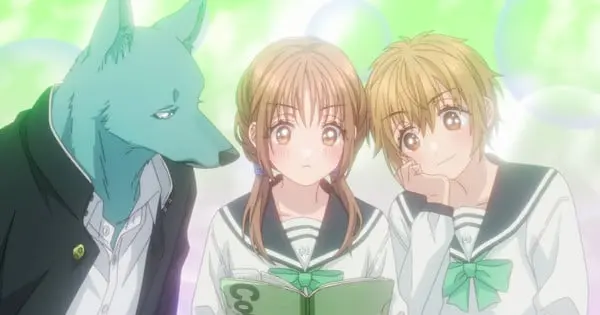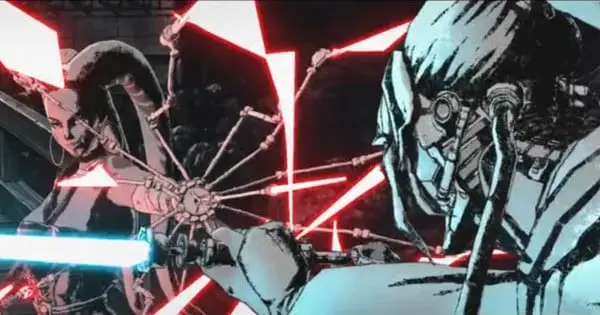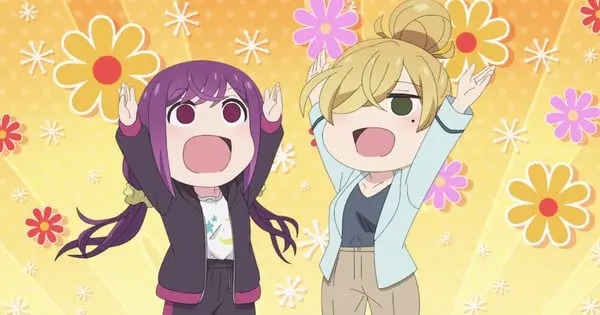In the turbulent year of 1862, as Japan grapples with the fallout from the Black Ships’ arrival, Sword of the Demon Hunter: Kijin Gentōshō plunges viewers into an episode brimming with political intrigue, a cursed blade, and the ever-blurring lines between humanity and the demonic. Titled “Night Tale of the Demon Sword Flying Blade” (or “Yaru Katana Yawa ~Hibari~” in Japanese), Episode 15, which aired on July 22, 2025, marks the beginning of a new arc, deepening the philosophical questions at the series’ core while setting the stage for significant shifts within Edo.
The Cursed Blade of Sugino and Political Undercurrents
The episode opens by revisiting samurai Sugino and his wife, celebrating his promotion and a new sword gifted by Lord Yasuhide. However, the celebratory mood quickly sours as Naotsugu and Jinya, discussing their situation at Ofuu’s soba restaurant, learn of Sugino’s acquisition of a “demon sword” crafted in Kadono. Despite a lack of recent incidents involving such blades, the suspicious origins of the sword prompt Jinya and Naotsugu to investigate.
Their quest soon leads them to Lord Yasuhide’s estate, only to discover that Sugino has tragically murdered his wife and absconded. This grim development immediately raises suspicions that the cursed sword, later identified as “Yatomori Kaneomi” (also referred to as Utanamorei Kami in some accounts), played a role in his descent into madness and violence. The protagonists, Naotsugu and Jinya, believe the blade to be connected to the crime.
A Lord’s Offer and a Demon’s Resolve
Lord Yasuhide then summons Jinya and Naotsugu for an audience, revealing his disapproval of Japan’s open borders and his ambition to establish a resistance. In a surprising turn, Yasuhide attempts to recruit Jinya into his cause, demonstrating his awareness of Jinya’s true identity as a demon and even revealing he has a demon subordinate named Tsuchiura.
Jinya, however, adamantly refuses Yasuhide’s invitation. His refusal stems from his own lack of a clear personal motivation and an unwillingness to compromise his individual code, highlighting the episode’s exploration of duty versus self-determination. This exchange is a pivotal moment, showcasing the complexities of Jinya’s character and his commitment to his path as a wandering ronin.
The Hunt for Sugino and a Glimpse of the Future
Although Jinya declines Yasuhide’s offer, he leaves with a crucial lead: Sugino’s frequent visits to a particular restaurant. This restaurant, Tomin, is rumored to be a meeting point for members of the Tosa Loyalist Party, a historical faction. This discovery pulls Jinya and Naotsugu deeper into the intricate web of Edo’s political landscape, with whispers of assassination plots and shifting allegiances.
Jinya eventually confronts Sugino, who is on his way to assassinate one of the loyalist faction leaders. Sugino’s demon sword, while indeed cursed, primarily allows him to unleash air slashes, an ability Jinya manages to overcome. The fight, while visually subdued, effectively uses sound to convey the power of the wind-based weapon. A key revelation during this encounter is that the true curse of the blade isn’t merely its supernatural power, but the darkness it awakens within its wielder. Flashbacks further elaborate on the swords’ origins, forged by a blacksmith who infused them with demon blood, hoping to create weapons of unparalleled power.
The episode concludes with Naotsugu finding inspiration in Jinya’s actions, leading him to adopt a more stringent personal code. This suggests a significant shift in their dynamic and foreshadows future character development.
Broader Implications and Thematic Depth
Episode 15, “Night Tale of the Demon Sword Flying Blade,” serves as a foundational installment for the series’ next arc, hinting at substantial movements within Edo following the end of the Sakoku decree. It delves into the growing trend of various factions employing demons like Jinya, suggesting a potential large-scale internal conflict within Edo’s borders.
Beyond the immediate plot, the episode thoughtfully explores the turbulent Bunkyū era in 1862, a period of historical unrest. It introduces themes of loyalty, power, and the inherent darkness within the human heart, all set against a backdrop where the distinction between good and evil is increasingly ambiguous. The discussions about foreign pressures on Japan and factions vying to preserve Japan’s identity resonate with historical events leading up to the Meiji Restoration. The intriguing idea that both demons and samurai face threats from societal changes, and thus might find common cause, adds a compelling layer to the narrative. While the political tensions didn’t fully culminate in this episode, they are positioned to become critical background factors in future installments.

